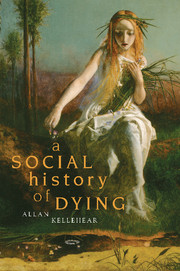Book contents
- Frontmatter
- Contents
- Acknowledgements
- Introduction
- Part I THE STONE AGE
- Part II THE PASTORAL AGE
- Chapter Four The Emergence of Sedentism
- Chapter Five The Birth of the Good Death
- Chapter Six The Second Challenge: Preparing for Death
- Part III THE AGE OF THE CITY
- Part IV THE COSMOPOLITAN AGE
- Conclusion
- Bibliography
- Index
Chapter Four - The Emergence of Sedentism
Published online by Cambridge University Press: 22 September 2009
- Frontmatter
- Contents
- Acknowledgements
- Introduction
- Part I THE STONE AGE
- Part II THE PASTORAL AGE
- Chapter Four The Emergence of Sedentism
- Chapter Five The Birth of the Good Death
- Chapter Six The Second Challenge: Preparing for Death
- Part III THE AGE OF THE CITY
- Part IV THE COSMOPOLITAN AGE
- Conclusion
- Bibliography
- Index
Summary
A most remarkable and unlikely thing happened about 12 000 years ago. It wasn't the invention of the wheel, a Sumerian invention some 4000 years ago (Daniel 2003: 49). It wasn't the invention of the boomerang by hunter-gatherers in Australia or the development of beautiful ceramics in Japan some 10 000 years ago (Klein 1999: 542). Instead, it was the development of farming (Lewin 1999: 215), a great and somewhat mysterious development that ultimately meant a departure from wandering to staying put in one place for a change – a fact that would forever alter the world from how we knew it previously. To the continuing wonder of our academic colleagues in most disciplines everywhere, a few of our ancestors began to cease their nomadic ways and established permanent or semi-permanent camps.
In the Near East, in places that we now call Palestine, Egypt and Iraq, we began to sow barley and wheat; in Africa we grew millet, sorghum, yams and dates. In China we grew millet, and rice of course, while in Southeast Asia early farmers harvested rice, sugar cane, taro and yam (Larson 1995: 186). In the New World, in places such as Central and South America, we grew maize, beans, potatoes and squash. In Western Europe, farming began more slowly, with most people still participating in sea-based economies or remaining with their hunting ways pursuing the local deer and wild boar across the countryside (Phillips 1975: 26).
- Type
- Chapter
- Information
- A Social History of Dying , pp. 69 - 86Publisher: Cambridge University PressPrint publication year: 2007



